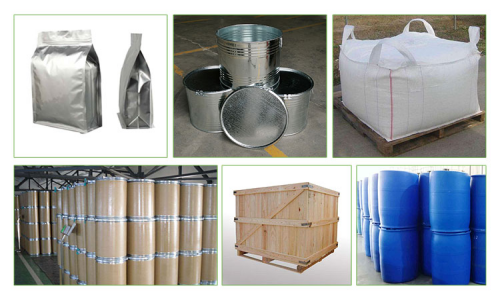Zirconium boride powder is a chemical substance and its molecular formula is ZrB2. Nature gray hard crystals. Zirconium boride has three components: zirconium monoboride, zirconium diboride, and zirconium tribromide. Only zirconium diboride is stable in a wide temperature range. Industrial production is mainly based on zirconium diboride. Zirconium diboride is a hexagonal crystal, gray crystal or powder, with a relative density of 5.8 and a melting point of 3040°C. High-temperature resistance, high strength at room temperature and high temperature. Good thermal shock resistance, low resistance, anti-oxidation at high temperature. The melting point is about 3000°C. With metallic luster.
Zirconium diboride powder(ZrB2) is a highly covalent refractory ceramic material with a hexagonal crystal structure. ZrB2 is an ultra-high temperature ceramic (UHTC) with a melting point of 3246°C. Coupled with a lower density of ~6.09 g/cm3 (the measured density may be higher due to ha impurities) and good high-temperature strength, it is suitable for high-temperature aerospace applications, such as hypersonic flight or rocket propulsion systems, for example, Furnace components, high-temperature electrodes, rocket engines, thermal protection structures for spacecraft with temperature capabilities exceeding 1800°C, and heavy-wear applications.
It is an unusual ceramic with relatively high thermal and electrical conductivity and has the same characteristics as the titanium diboride and diboride shares of the same structure. In addition to its fire resistance, good thermal conductivity (>50 W/m/K), inertness to molten metal, good thermal shock resistance, and high electrical conductivity (~105 S/cm), ZrB2 can also pass EDM basic ceramic molding.
ZrB2 parts are usually hot-pressed (applying pressure to the heated powder) and then machined to form. The covalent nature of the material and the presence of surface oxides hinder the sintering of ZrB2. The presence of surface oxides will increase the coarsening of crystal grains before densification during the sintering process. Pressureless sintering of ZrB2 is possible. Sintering additives such as boron carbide and carbon will react with surface oxides, thereby increasing the driving force for sintering, but the mechanical properties will decrease compared to hot-pressed ZrB2. Feel free to send an inquiry to get the latest price if you would like to buy Zirconium Diboride ZrB2 Powder in bulk.
Properties of Zirconium Boride
Molecular formula: ZrB2
Molar mass: 112.85 g/mol
Appearance: grey-black powder
Density: 6.085 g/cm3
Melting point: 3246 °C
Solubility in water: Insoluble
Crystal structure: Hexagonal, hP3
Space group: P6/mmm, No. 191
Features of Zirconium Boride
TiB2, ZrB2, HfB2, VB2, NbB, NbB2, TaB, TaB2, CrB2, Mo2B5, W2B5, Fe2B, FeB, CoB, Co2B, NiB, Ni2B, Ni2B, LaB6, UB4, UB2.
Zirconium diboride (ZrB2) is a highly covalent refractory ceramic material with a hexagonal crystal structure. ZrB2 is an ultra high temperature ceramic (UHTC) with a melting point of 3246 °C. This along with its relatively low density of ~6.09 g/cm3 (measured density may be higher due to hafnium impurities) and good high temperature strength makes it a candidate for high temperature aerospace applications such as hypersonic flight or rocket propulsion systems. It is an unusual ceramic, having relatively high thermal and electrical conductivities, properties it shares with isostructural titanium diboride and hafnium diboride.
How is Zirconium Boride Produced?
ZrO2 and HfO2 are reduced to their respective diboron silanes by metal thermal reduction. Use cheap precursor materials and react according to the following reactions:
ZrO 2 + B 2 O 3 + 5Mg→ZrB 2 + 5MgO
The precursor materials for this reaction (ZrO 2 / TiO 2 / HfO 2 and B 4 C) are cheaper than those required for stoichiometric and boron thermal reactions. Prepare ZrB2 at a temperature higher than 1600°C for at least 1 hour through the following reaction:
2ZrO 2 + B 4 C + 3C→2ZrB 2 + 4CO
This method requires a slight excess of boron because some boron is oxidized during the boron carbide reduction process. It is also observed that ZrC is the product of the reaction, but if the reaction is carried out under an excess of 20-25% of B4C, the ZrC phase disappears and only ZrB2 remains. The lowest synthesis temperature (~1600°C) will produce UHTC with finer dimensions and better sinterability. Before boron carbide reduction, the boron carbide must be ground to promote the oxide reduction and diffusion process.
ZrO2 and HfO2 can be dispersed on the boron carbide polymer precursor before the reaction. in. Heating the reaction mixture to 1500°C results in the formation of boron carbide and carbon in situ, and the subsequent reduction of ZrO2 to ZrB2.
The gas phase is used to reduce the vapors of zirconium tetrachloride and boron trichloride when the substrate temperature is higher than 800°C. Recently, alternative ZrB2 films can also be prepared by physical vapor deposition.
Zirconium boride has high hardness, high thermal conductivity, good oxidation resistance and good corrosion resistance. Zirconium diboride is used in special ceramic refractory industries, nuclear industry, aerospace industry and military industries. Zirconium diboride can be used as a surface coating for rolling balls and smooth solid materials.
Carbon fiber reinforced zirconium diboride composites exhibit high density, while silicon carbide fiber-reinforced zirconium diboride composites are brittle and show catastrophic damage.
Zirconium diboride (ZrB2) can be used as thin-film electronic components for sensors, actuators and micro-systems operating in high-temperature environments because it has metal-like conductivity and has a melting temperature of 3245°C.
Other applications of Zirconium Diboride ZrB2 Powder:
1) zirconium diboride powder is used to produce materials for ceramics.
2) zirconium diboride powder can be used as a neutron absorber.
3) zirconium diboride powder can be used as an abrasion-resistant coating.
4) zirconium diboride powder can be used as crucible lining and anticorrosive chemical equipment.
5) zirconium diboride powder can be used as anti-oxidation compound material.
6) zirconium diboride powder can be used as a refractory material, especially in the status of anticorrosion of molten metals.
7) zirconium diboride powder can be used as a thermally enhanced additive.
8) zirconium diboride powder can be used for high-temperature resistance.
9) zirconium diboride powder can be used as a special type of dope against high temperature, corrosion and oxidation.

Tongrun Nano Technology Co. Ltd. (TRUNNANO) is a trusted global chemical material supplier & manufacturer with over 12 years of experience in providing super high-quality chemicals and nanomaterials, including boride powder, nitride powder, graphite powder, sulfide powder, 3D printing powder, etc.
The company has professional technical and quality supervision departments, a well-equipped laboratory with advanced testing equipment, and an after-sales customer service center.
If you are looking for high-quality Zirconium Boride, please feel free to contact us or click on the needed products to send an inquiry.
Storage Condition of Zirconium Boride
Damp reunion will affect ZrB2 powder dispersion performance and using effects, therefore, zirconium diboride ZrB2 powder should be sealed in vacuum packing and stored in cool and dry room, the zirconium diboride ZrB2 powder can not be exposure to air. In addition, the ZrB2 powder should be avoided under stress.

Packing&Shipment of Zirconium Boride
We have many different kinds of packing which depends on the zirconium diboride ZrB2 powder quantity.
Zirconium diboride ZrB2 powder packing:vacuum packing, 100g, 500g or 1kg/bag, 25kg/barrel, or as your request.
Zirconium diboride ZrB2 powder shipping:could be shipped out by sea , by air, by express?as soon as possible once payment receipt.

L/C, T/T, Western Union, Paypal, Credit Card etc.

Q1
What is zirconium boride used for?
Answer: Zirconium diboride (ZrB2) is an ultra high termparature ceramic powder. With good high temperature strength, it is used in the aerospace industry for hypersonic flight or rocket propulsion. ZrB2 is a kind of senior engineering material broadly used in various fields.
Q2
What is the name of the compound ZrB2?
Answer: Zirconium diboride (ZrB2) is a highly covalent refractory ceramic material with a hexagonal crystal structure.
Q3
What are the properties of zirconium diboride material?
Answer: It is considered strategic, both as a base material and in conjunction with other composites, for a range of technological applications due to properties such as high elastic modulus (∼440–460 GPa), high melting point and hardness (∼3000°C and ∼20–25 GPa respectively), good abrasion and creep resistance.
Q4
What is the structure of ZrB2?
Answer: The diffraction spectra reveal that the ZrB2 crystal adopts a hexagonal phase structure (P 63/m m c) and boasts an exceptional purity level of 99.2 %. This crystal is characterized by a hexagonal phase arrangement, featuring lattice parameters a = 3.1650 Å, b = 3.1650 Å, c = 3.5200 Å, and a lattice volume of 30.5366 Å.
Q5
What are the thermal properties of zirconium diboride?
Answer: Zirconium diboride (ZrB2) is in a class of materials known as ultrahigh temperature ceramics (UHTCs). ZrB2 is in this class because it has a melting temperature above 3000 °C along with high thermal and electrical conductivities.
Zirconium Diboride Properties | |
| Other Names | zirconium boride, ZrB2 powder |
| CAS No. | 12045-64-6 |
| Compound Formula | ZrB2 |
| Molecular Weight | 112.8 |
| Appearance | Gray to Black Powder |
| Melting Point | 3246 °C |
| Boiling Point | N/A |
| Density | 6.09 g/cm3 |
| Solubility in H2O | N/A |
| Exact Mass | 111.923315 g/mol |
Zirconium Diboride Health & Safety Information | |
| Signal Word | Warning |
| Hazard Statements | H228 |
| Hazard Codes | F |
| Risk Codes | N/A |
| Safety Statements | N/A |
| Transport Information | UN3178 4.1/PG III |




